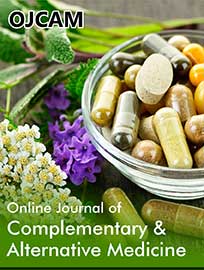 Review Article
Review Article
From Toxins to Drugs: Chemistry and Pharmacology of Animal Venom and other Secretions
Andrew G Mtewa*1,2,4, Tamirat Bekele2,3,4and Annu Amanjot2
1Department of Chemistry, Malawi University of Science and Technology, Malawi
2School of Medicine, Mbarara University of Sci. & Tech, Uganda
3Department of Pharmacy, Ambo University, Ethiopia
4Pharm-Biotechnology and Traditional Medicine Center of Excellency, Uganda
Andrew G Mtewa, Chemistry Department, Malawi Institute of Technology, Malawi University of Science and Technology, Malawi.
Received Date: November 22, 2018; Published Date: February 22, 2019
Abstract
Animal secretions are currently proving more than before to be one of the best sources of drugs for current and future health complications. Well managed and optimized, their chemical compounds can as well be used to prevent diseases. Insects, mammals, birds and lizards are some of the animals with bioactive peptides. These bioactives come from skin, saliva, venom, excreta, tissues and other fluids among others sources. Animal secretion uses as drugs have been proven both from history of community use as well as from laboratory benches. Drug development and designing from animals requires in-depth studies of the chemistry and pharmacology of the compounds responsible for bioactivities. Peptides form the largest part of these bioactive secretions. They are naturally unstable, and their handling and storage ways need to be optimized to maintain structure and potency which requires focus as well as adequate capital investment in order to get better drugs for health and disease management. The aim of this work was to present some of the pharmacological uses of chemical secretions and venoms from animals.
Keywords: Animal venom; Apitherapy; Drug receptors; Acetylcholine; Envenomation; Nutraceuptides; Drug development
-
Andrew G Mtewa, Tamirat Bekele, Annu Amanjot. From Toxins to Drugs: Chemistry and Pharmacology of Animal Venom and other Secretions. On J Complement & Alt Med. 1(1): 2019. OJCAM.MS.ID.000505.





